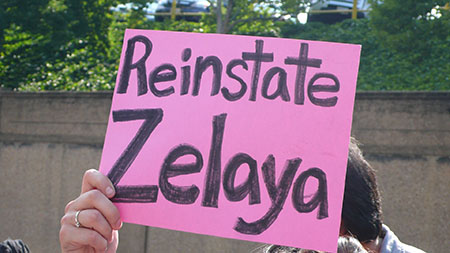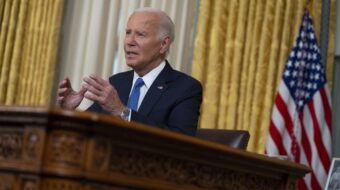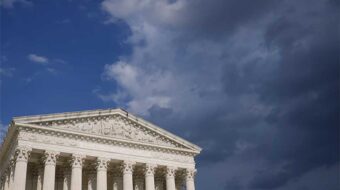
Regarding the controversial elections in Honduras on Sunday, November 29, all are agreed on one thing: National Party presidential candidate Pepe Lobo got the most votes, probably around 56 percent. However, hopes that the Honduras crisis, which began when the elected president, Manuel Zelaya, was overthrown by a right-wing coup on June 28, would be “solved” by the election seem premature.
That Lobo got the most votes, far more than the Liberal Party candidate, is probably due to the fact that the Liberal Party to which both Zelaya and coup leader Roberto Micheletti belong, went into the election deeply divided and discredited in the eyes of the voters because of the instability and economic damage caused by the coup.
But the question of turnout is vitally important, because supporters of President Zelaya and most of the resistance to the coup had called for an election boycott if Zelaya and constitutional normality were not restored in time for the election. One left-wing presidential candidate, Carlos Reyes, withdrew his candidacy, as did the left-leaning Liberal Party candidate for vice president, the incumbent mayor of San Pedro Sula, and several dozen candidates for Congress and local offices, after the collapse of an October 30 agreement that it had been hoped would solve the crisis. However another left-wing presidential candidate, Cesar Ham of the Democratic Unification Party, decided to stay in the race, giving the reason that his party’s surveys indicated that it would pick up congressional seats. (We have not yet seen results for Mr. Ham, nor figures on the number of blank ballots cast as a protest).
The Micheletti coup regime threatened to prosecute anyone who advocated an electoral boycott, and there were reports of military and police raiding homes of people who were suspected of being pro-boycott. On Election Day, police and military suppressed a rally in Honduras’ second largest city, San Pedro Sula, with reports of one death plus injuries and arrests. There were also reports that employees of government agencies and private businesses were being told that they would be fired if they did not vote.
:The government election agency quickly announced a very high turnout of 61.3%. But President Zelaya, in refuge in the Brazilian embassy in the Honduran capital, Tegucigalpa, announced a turnout of as low as 21%. Zelaya based his projection on reports from members of the anti-coup resistance who were monitoring the vote. To add to the confusion, the coup government’s electoral agency gave the 61.3 percent figure “only tentatively”, due to a “breakdown” in the computer system that did not allow the data to be “verified”. But another agency contracted by the government to do exit polls showed the turnout to be 47.6 percent. Various reports indicate that the turnout was much lower in poor urban neighborhoods where Zelaya and the left have most of their support. Turnout in Honduras is usually low, about 50%.
The election campaign began, by law, on September 1. For all three months of the campaign, the Micheletti regime installed by the coup was in power, repressing pro-Zelaya mobilizations and periodically shutting down the opposition press and media. The usual groups that send observers to controversial elections (The Organization of American States, the European Union, the United Nations and the non-profit Carter Center) all refused, saying that the basic conditions for a fair election were not present.
However, the International Republican Institute (an agency of the G.O.P., which has been enthusiastically backing the coup), plus a contingent of “monitors” organized by ultra-right Cuban exile U.S. Congresswoman Ileana Ros-Lehtinen, joined observers from the National Democratic Institute in going down to do “election monitoring”. Their reports are not in yet, but it is to be doubted that they will contain surprises.
The Colombian government quickly recognized the results of the election as clean and fair, and it is likely that other right-wing governments in the area, such as those of Peru, Panama and Costa Rica, will do so also. The Obama administration has not given a definitive statement but seems to be trending that way. On the other hand, the governments of Brazil, Argentina, Venezuela and other left-wing governments in the area have made it clear that they do not recognize the results, and are angry with the Obama administration for waffling on its original support for Zelaya’s restoration.
President Zelaya’s term ends on January 27 and it is improbable that he will be restored to power as a lame duck. But he is still besieged in the Brazilian embassy, and there may now be increased danger of a violent move to get at him.
Photo: http://www.flickr.com/photos/codepinkalert/ / CC BY-SA 2.0












Comments